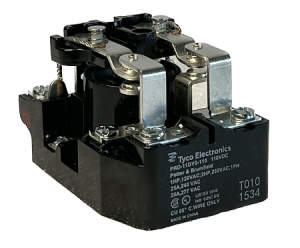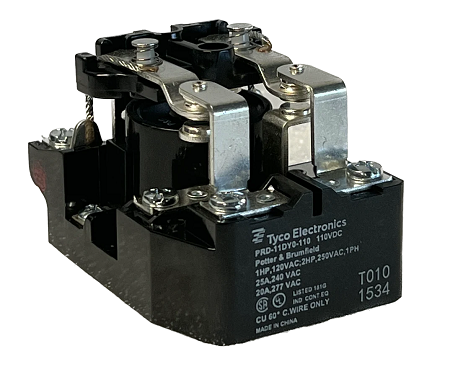Understanding General Purpose Relays: Essential Components in Modern Electronics

While there are many unsung heroes in electrical systems, the general purpose relay tops the list. Not glossy like some touchscreen or as exciting as that excellent circuit board, these little devices form the backbone of our daily electrical and electronics systems.
In this post, we talk about what general purpose relays are, why they matter, and how they function in various applications.
What is a General Purpose Relay?
This is simply an electrically operated switch that allows one circuit to operate another independent circuit. For example, if you would like to switch a light on using a small switch, a relay can quickly achieve it when its low-power signal controls the high-power output. Relays let you use a small current to sustain a larger current.
These relays are everywhere, from straightforward applications like home appliances to more complex industrial equipment. They are labeled “general-purpose” because they are flexible and widely used for many applications, making them a common choice across different industries.
How do General Purpose Relays Work?
A relay based on a general-purpose principle uses simple current flow: a low-power input signal energizes an electromagnetic coil. The current carried by that coil creates a magnetic field that attracts a moving metal arm known as an armature.
That armature can connect or break and, therefore, controls an output circuit. When the coil loses power, the magnetic field disappears, and the armature goes to its resting position. The film breaks contact in the output circuit.
Essential Components of a General Purpose Relay
Coil: This part generates the magnetic field whenever current flows through it.
Armature: The movable member acts as a passage between contacts.
Contacts: These are the points at which the circuit opens or closes.
Spring: Phone exchanges and data centers use relays to route signals, and to manage different systems.
Types of General Purpose Relays
General purpose relays are available in numerous types of configurations for a given application. Some of the most common ones are as follows:
Single Pole Single Throw (SPST): This is the simplest as it can make or break one circuit.
Single Pole Double Throw (SPDT) relays switch between two circuits with one input and two outputs.
Double Pole Double Throw (DPDT): The DPDT relays offer independent circuits that can switch over two outputs.
Every relay type has a specific application, such as flexibility and adaptability with varied electrical systems.
Why General Purpose Relays Are Important?
Relays are vital for small-scale and large-scale applications. Here’s why these are essential components of the electrical system:
Isolation: General-purpose relays permit the circuits to be isolated. It is necessary to operate a high-power load even when the control circuit runs at low voltage. Relays also protect sensitive control components from possible damage caused by high-power outputs.
Control High-Power Devices with Low Power: These relays allow a small signal to control any high-power device. For instance, the car starters use relays so that through just an ignition switch, the engine of the car is turned off and on.
Reliability and Safety: Relays are safe and reliable devices for controlling high-voltage circuits without being close to such high-power systems. They are precious in industrial applications, where safety is paramount.
Applications of General Purpose Relays
General purpose relays are very general and have been used in many applications, such as:
Automotive: Relays are used in autos to control headlights, air-conditioning etc. It allows low-voltage switches to drive high power elements; therefore, it is possible to achieve reliability and reduce the number of complicated wiring systems.
Industrial Automation: Relays automatically swap jobs, command machinery, and provide safety to a factory. Relays are used much in conveyor systems, robotics etc.
Telecommunications: Relays are used in exchange lines for telephone and data centers to transmit signals and control different systems.
Power Supply Systems: Relays are applied in uninterruptible power supplies wherein the source of power is transferred from the backup to the primary sources in case of power failure.
Home Appliances: Most home appliances, such as refrigerators and washing machines, use relays for their high-voltage compressor and motor but are controlled by low-voltage circuitry.
Benefits of General Purpose Relays
There are many advantages that have made them popular in commercial as well as industrial applications :
Tough and Reliable: They can be switched hundreds of thousands of time without failing and find applications wherever there is a need to repeat an operation involving many switching cycles.
Easy to Use: Relay units work on very simple principles; once the concept of design is understood, their applications in electrical systems are pretty simple.
Economical: Relays are fairly inexpensive, easily substituted, and economical for nearly all applications.
Flexibility: This is another attribute, as relays can be applied in different environments and configurations, hence giving a wide scope of customization opportunities based on the desired application.
Selecting the Appropriate General Purpose Relay
The factors that are considered when selecting a general purpose relay include the following:
Voltage and Current Rating: Ensure that the rated voltage and current is able to handle the requirements of the load that will be controlled.
Contact Configuration: It all depends on the circuit you are doing. It could be SPST, SPDT, or DPDT.
Operating Environment: Determine if the relay needs weatherproofing or will need to stand in excess temperatures. Some are designed for outdoor and industrial applications, while others prefer to thrive indoors.
Size and Mounting Type: Most relays come in different sizes and mounting types. With such a compact design, less space will occupy the system inside.
Wrapping Up
General purpose relays are not usually given much thought, but they play a very critical role in managing and controlling electrical systems of any scale. They can be used with small signals to modulate the control of very powerful circuits, ensure safety, and ensure reliable operation in various industries. The main functions and types of general purpose relays and their applications will guide engineers, electricians, and even enthusiasts in choosing the right relay for the right job.
So next time you turn on the light, you are working with your car, or you enjoy any of the thousand devices in your house, well, you will be applying the power of an electrical relay-busy behind the scenes to keep everything running.

